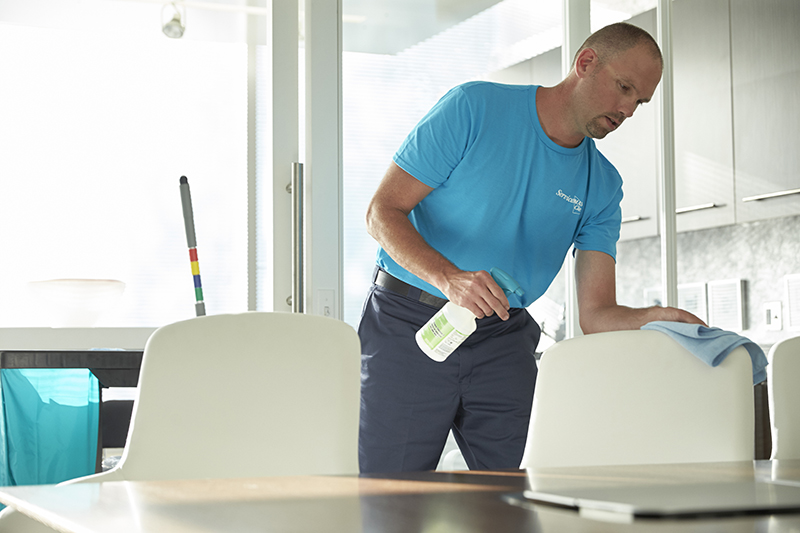Since the recent emergence of the novel coronavirus, COVID-19, you’ve heard the guidance of health authorities to not just wash your hands but also to clean and disinfect high touch surfaces such as door knobs, light switches and telephones, to name a few. For cleaning professionals, these are what are referred to as hard surfaces. But what about soft surfaces? And what exactly is a soft surface?
The difference between hard surface and soft surface is their porosity level with hard surfaces being non-porous and soft surfaces being porous. In a commercial or office environment, soft surfaces include such things as upholstered chairs and reception sofas, cubicle walls, and yes, carpet.
While hard surfaces are generally easy to clean and disinfect, simply spray and wipe, soft surfaces represent a different challenge. As they are porous in nature, microbes such as bacteria and viruses can get trapped within the surface’s fibres. According to Philip Tierno Jr., Ph.D., a microbiologist and immunologist at New York University Langone Medical Center and the author of The Secret Life of Germs, the microbial life span depends on many factors. While the lifespan of a virus can be limited by its ability to find a living host cell, bacteria can reproduce on its own. Humidity also plays a factor as both bacteria and viruses require humidity levels higher than 10% in order to thrive.
Then, there’s the carpet! While carpet has many benefits such as its ability to noise dampen and to catch and hold dirt, due to the density of its fibres, carpet can be a reservoir of bacteria and viruses. In fact, research by Tierno has shown that carpet has about 200,000 bacteria per square inch, 4,000 times more than a standard toilet! And some of these microbes can have dire health consequences. For example, the Norwalk virus, commonly known as the Norovirus, which causes symptoms similar to the stomach flu, can survive in carpet for up to 12 days1! And while you may be asking, “It’s on the floor, why do I need to worry?” The simple answer is this – the virus can become airborne as people walk across the carpet and enable it to be breathed in.
While the conventional directive to launder soft surfaces in as high a temperature as the substrate will allow for such soft surfaces as clothing and towels, just how can you clean and disinfect a chair or a cubicle wall or carpet? The good news is there is a way! Depending on the type of microbe, regular professional deep cleaning can be achieved! Professional cleaning solutions using specialty equipment such as a hot water extractor or an electrostatic sprayer can help reduce the number of microbes on these soft surfaces. The key here is “regular” as once the deep cleaning is done, a passerby can undo all the work.
So, if you’re concerned about what may be hiding in the chairs, cubicle walls and carpets in your facility, call ServiceMaster Clean to help prevent the spread of virus in your workplace.
1 https://www.canada.ca/en/public-health/services/food-poisoning/norovirus.html
